
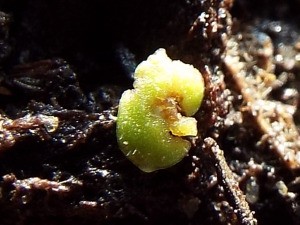 Some varieties of pansies do best in late spring and early summer, while others do best in fall and winter. In general, most varieties will do well in either. I have been buying plants in early fall, as soon as they are available in garden centers. By doing so, I have a nice display in fall, all but the coldest parts of winter, and then, spring and the early part of summer.
Some varieties of pansies do best in late spring and early summer, while others do best in fall and winter. In general, most varieties will do well in either. I have been buying plants in early fall, as soon as they are available in garden centers. By doing so, I have a nice display in fall, all but the coldest parts of winter, and then, spring and the early part of summer.
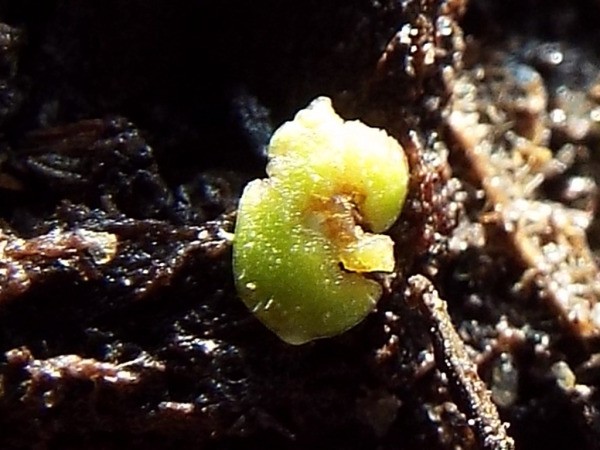
This year, I plan to raise pansies from seed. With pansies unable to withstand summer heat and strong sun, some people are confused as to planting seed in summer.
If you want a late fall and winter display, the seed must be planted during summer. This is due to the fact that from seed to bloom, a full 12 weeks (3 months) is required.
Mature pansy plants will always succumb to summer extremes, while young seedlings, given adequate protection, will tolerate moderate summer temperatures and sunlight. By the time the seedlings have become mature plants, the weather will be considerably cooler.
By starting my seed in early August, I should have blooming size plants by early November. I plan to save a lot of money by growing pansies from seed, plus, I won't have to worry as to whether I will be able to find my favorite varieties at the garden centers.
The treatment of pansy and viola seed is a bit different from that of most seeds in general. For a medium, they should have a light, loamy soil, high in rich organic matter. This medium must be kept moist at all times, never allowing it to become dry.
The soil should be thoroughly moist before planting the seeds. The seed should not be planted deeply. They can be gently pressed into the soil or a scattering of soil can be broadcast over the seed, barely enough to cover the seed.
Pansy seeds require moist conditions (not soggy), cool temperatures (<60 degrees) and darkness to germinate. It takes about 2 weeks for the seed to sprout. I planted my seed in a flat filled with rich soil, placed the flat on the ground in the shadiest, coolest part of my yard, and covered the flat with a concrete mixing tub, (black plastic will work just as well). My eager seed began sprouting in a week.
When all, (or most) of the seed has sprouted, the cover can be removed for short periods daily, gradually increasing the exposure as the seedlings begin to mature.
By the time the plants are large enough to easily be lifted and transplanted to their permanent location, the sun should no longer pose any problem to the plants. Don't worry about transplanting. The pansy is one plant that seems unaffected by transplanting, even several times, (should you decide you want to move them to another location).
It is unlikely the seedlings will be attacked by mold, mildew, or virus, but do keep a watch for such. More likely, the seedlings could be devoured by slugs and snails. They do favor the most tender parts of the pansy plant, and of course, the seedlings are the most tender of all. I suggest a product such as Bug-Geta for eradicating the slugs and snails. I have found it to be very effective. It isn't cheap, but a little goes a long way. Get it on sale if you can.
Beaconsfield Pansy
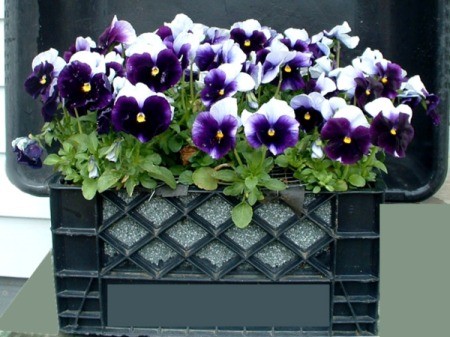
Add your voice! Click below to comment. ThriftyFun is powered by your wisdom!
Did you catch what was wrong with this article? No? I'll tell you. I admitted I had never grown pansies from seed, before. Yet, being the good hearted guy that I am, and knowing now is a good time to start pansy seeds for Fall and Winter, I proceed to tell you how to grow pansies from seed.
I researched the subject, compiled my findings and wrote my article, relying heavily on the information I had gathered from the Internet. There's a lot of information to be had on the Internet. Trouble is, so much of it isn't true.
Some articles said pansy seed required darkness to germinate. I took what they said literally. Now, I know better. All seed in a batch will not sprout at the same time. If those that sprouted early are kept in darkness because others have not sprouted yet, they will be growing in darkness. What you'll get are spindly plants like the one in the picture.
These plant probably wont survive. They would be inferior if they did. Commercial growers have a reason for growing their pansies as short and stocky as they can.
When I realized what was going on, I removed the covers from the seedling trays. When I did, hundreds of seeds popped up overnight. Though uncovered, the trays were still in a place that received shade only.
So, here are my revised notes: Pansies probably do germinate better in a well shaded or darker areas. They do not require 'darkness' to germinate. When sprouting where there is some light, they will be shorter and stockier. With this being the case, they would not need to be 'hardened off', but could be moved immediately to bright light (not direct sun), when the time was right.
So, choose a place to germinate the seed that is at least full shade, but do not cover. As for temperature, the range should be from of 59-65°F.
Commercial growers who grow pansies in a controlled environment shoot for 62°F
It is said that high temperatures and uneven moisture levels are the most likely causes of failure. Keep the plants under 66°F and never allow the soil to dry out or become soggy.
I now have several flats with hundreds of emerging pansies. They're short and have a good green color. What can I say? At least, this time I'm speaking from a little experience.
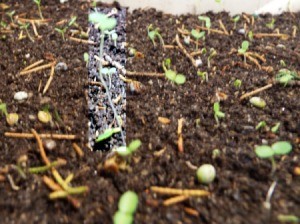

Seeds were planted in this flat 10 days ago. As the average germ time is said to be 14 days, these seedlings have grown rather quickly. I did not sow the seeds thickly, so as you can see, I did get a high germ rate.
What is interesting here, is the amount of light given to the seed once planted. Once again, some growers state pansy seeds need dark to germinate, while others only state they don't need light to germinate.
The last package of seed I bought stated the seeds needed light to germinate, and for this reason it was advised to plant the seeds no deeper than one sixteenth inch.
The pictured flat was never covered to provide darkness and was kept in a cool area with ample indirect light.
I have concluded that pansy seed will germinate in either dark or light conditions. I certainly have had them germinate well under either. I prefer to germinate them uncovered in an area with no direct sun light.
Starting them in darkness causes weak, spindly seedlings, whereas, when given at least dappled sunlight, the seedlings are stockier and much greener.
It seems pansy seeds aren't as fussy as some growers would have us believe. While most tell us the ideal temperature for germination is 62 degrees, I've had good germination when trays were kept in the coolest part of me yard where the temperatures hovered at around 70 degrees.
If you like pansies, don't shy away from growing your own because you think they might be difficult. I have not found them to be so. Just be sure to keep the soil moist at all times, start seeds in the coolest area you can provide and give them plenty of indirect sun light.

Sept. 24, 2017
My, things are looking good! Even with a few 'no shows', (or maybe slugs got them), things are still looking good.
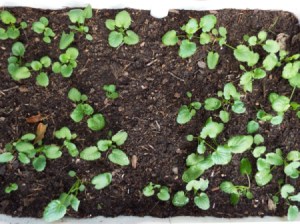
Pansies are small but carry a lot of impact so I know your yard will be beautiful and a pleasure to behold. Please post lots of photos later.
Well, People,
My first time to grow pansies from seed. I have never bought any that looked any better than these. Guess I did something right. They should be blooming in a couple weeks.
I feel good.
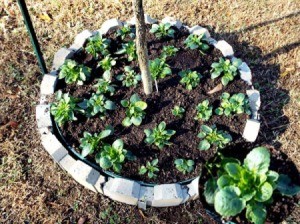
Add your voice! Click below to comment. ThriftyFun is powered by your wisdom!